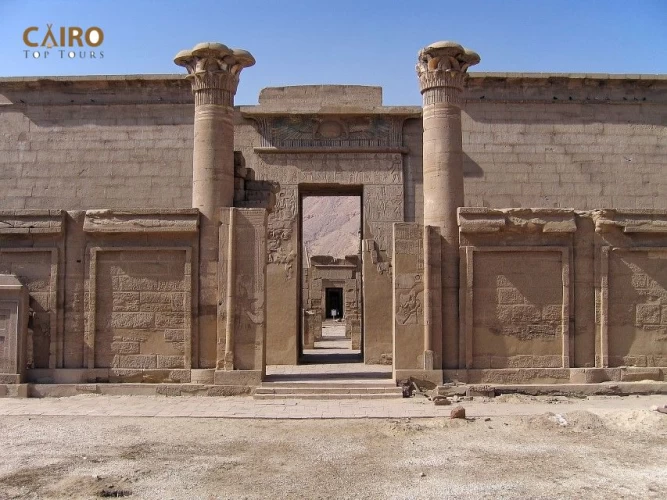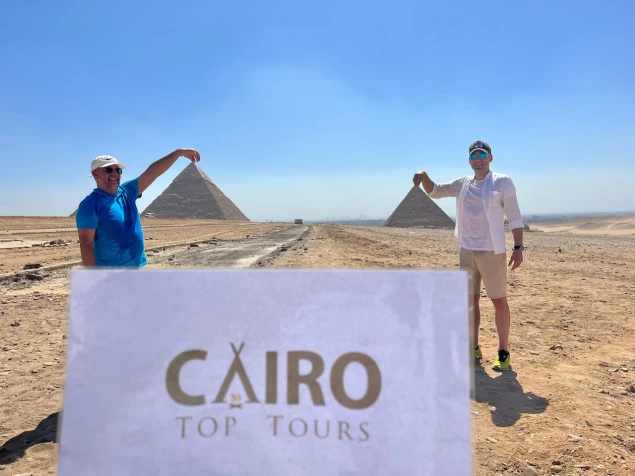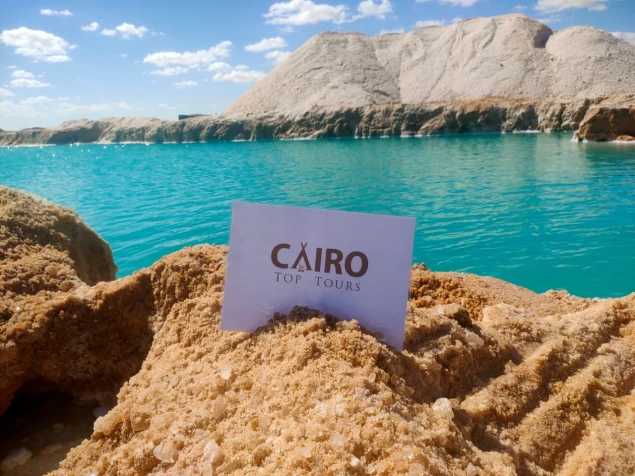
Temple of Madinet Habu
The Temple of Medinet Habu: A Testament to Ramesses III’s Legacy
Temple of Medinet Habu, in the west bank of Nile opposite Luxor (ancient Thebes), remains one of the best preserved and the most historical of all Egyptian temple complexes. Barely known as the mortuary temple of Ramesses III this huge building not only served to commemorate the reign and divine kingship of one of the final great pharaohs of Egypt, but also as a fundamental religious, economic and military hub for centuries. Approximately a 20th Dynasty (c. 1186–1155 BCE) memorial to Ramses III, Medinet Habu holds an immeasurable value for the study of the political and religious life of New Kingdom Egypt, due to its imposing
Historical Context
Ramesses III who is commonly believed to be the last strong Pharaoh in the New Kingdom period reigned Egypt at a period of strong internal and external knocks. He had many threats including invasions by the sea peoples, libyans and internal conspiracies. This notwithstanding, he was able to keep Egypt’s stability with predominantly martial operations and economical reforms. The Temple of Medinet Habu was constructed to celebrate his triumphs and relate his mortuary temple, which made his memory and his divine presence which should last for the centuries.
Temple building got underway soon after Ramesses III came to power and he witnessed its completion. Drawing inspiration from their previous mortuary temples such as the nearby Ramesseum, dedicated to Ramesses II, new architectural are artistic elements were introduced making it unique.
Architectural Significance
The walls around the Temple of Medinet Habu were huge masses of mudbrick that surrounded the temple with a fortress ambience. This was not just symbolic; it probably proved defensive during riots. The complex occupies about 66 000 square meters of surface area and comprises not only the main temple but a set of secondary chapels, store houses, living places for priests and workers, and administrative facilities.
At the center of the complex there is the main temple, modeled on a traditional New Kingdom mortuary temple. An increasingly complex plan marks out the layout in a linear fashion from the monumental first pylon, to courtyards, and to pillared halls, culminating at the sanctuary at the rear. The first pylon is adorned with colossal images of Ramesses III defeating his enemies, a frequent theme which is carried out throughout the temple which helped to build his image of warrior-king and protector of Ma’at (cosmic order).
Inside, the temple is decorated with deeply incised reliefs and inscriptions which are almost intact. These scenes indicate not only religious actions but exact descriptions of military campaigns, especially the wars with the Sea Peoples. These images are among the best surviving historical records in ancient Egypt, a source of unusual information about the military strategies, weapons, and enemies that opposed Ramesses III in his rule.
Religious Function
As a mortuary temple, Medinet Habu served the cult of worship of the deified king Ramesses III and of Thebes’s main deity Amun. Here offerings and festivals were conducted daily in order to guarantee an eternal life to the pharaoh and divine preservation of Egypt. The configuration of the temples is in accordance with the conventional religious architecture, with Hypostyle hall, sanctuary and sacred barque shrine; where processions and rituals would have occurred.
The temple was also closely related to the Beautiful Feast of the Valley, an annual major festival during which the statue of Amun was taken over the Nile to the west bank necropolis. There is a religious significance to this celebration, and Medinet Habu was a player in addition to this.
Artistic and Cultural Contributions
The decorative program of this temple is one of its most interesting features: it contains religious iconography and historical narrative interlocked. The military scenarios are particularly impressive for their sense of realism, as well as the measure of detail. The great illustrations of Ramesses III’s battles against the Sea People depict ships in naval war, masses of soldiers in formation, prisoners being exhibited to the king.
These reliefs are used both as propaganda, and documentation. Although they glorify the king’s divine reign and his military successes, they also contribute meaningful material for historians seeking to understand the late Bronze Age collapse and the migrations and invasions that convulsed the Eastern Mediterranean at the time.
Except for battle scenes, the temple walls also contain the images of gods and goddess such as Amun, Mut, Khonsu and others protective god and demi-god. The religious proceeding and divine communication scenes confirm the pharaoh as the creator in between the gods and people.
Decline and Rediscovery
At the decline of the New Kingdom the temple complex continued its life for several centuries, but its functions changed. Part of the site was reused during the Ptolematic and Roman period and some reliefs were mutilated or altered to show religious and political ideologies.
Part of the temple was converted into a church in the early Christian era and Christian graffiti decorate some of the temple walls. Then as the area was slowly deserted, the site was obliterated with sand and debris until it was rediscovered by early European explorers and Egyptologists in the 19th century.
Recent archaeological excavations, and especially by the Oriental Institute of the University of Chicago have uncovered quite a bit of the primitive magnificence of the temple. Efforts to conserve the temple have extended up to date, and thus Medinet Habu is one of the most well preserved examples in New Kingdom architecture.















